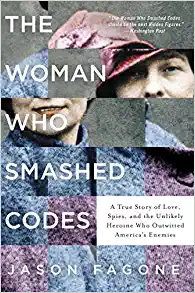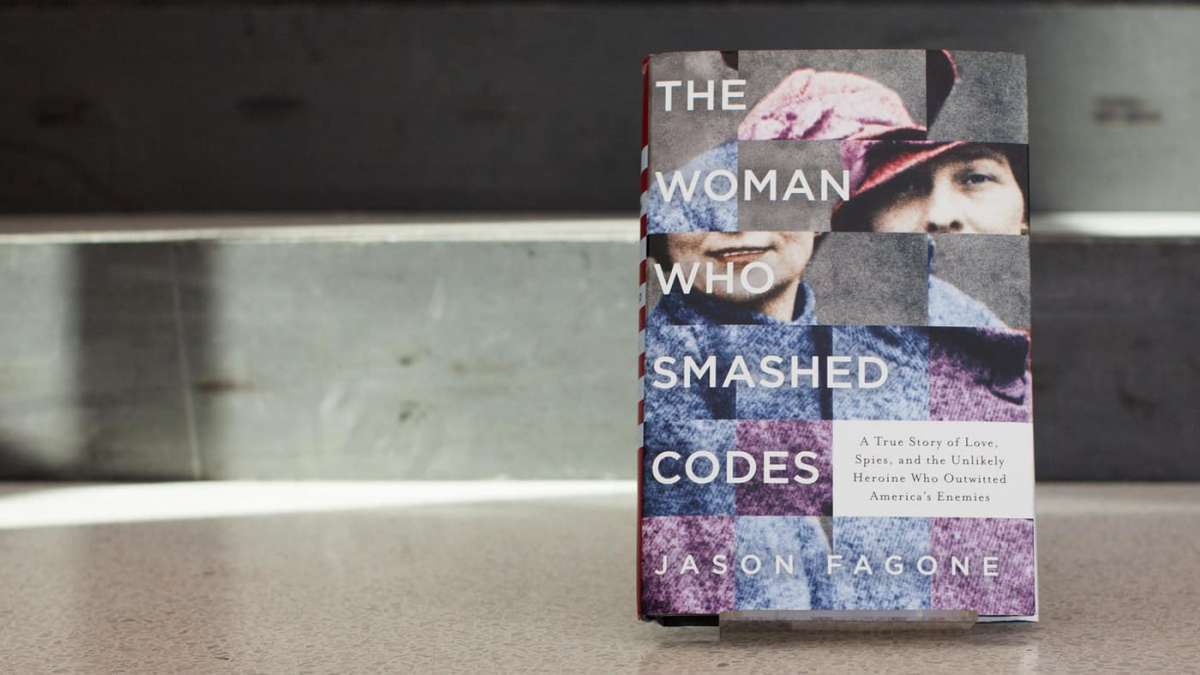The Woman Who Smashed Codes by Jason Fagone
 Journalist Jason Fagone has tapped into a little-known piece of history with his latest book, The Woman Who Smashed Codes.” Fagone’s book tells the story of Elizebeth Friedman, whose ability to crack codes in language and writings for the National Security Agency (NSA) during World War II made her an invaluable asset to the nation. Her husband, William had long been recognized by NSA as the “founder of the science of modern American cryptology,” but Elizebeth’s reputation as a master codebreaker is what bought them both the most notoriety. Taking place at a time in history where women’s contributions to STEM fields and other areas where the most intricate knowledge and skills must be applied, Elizebeth was often left out of the reporting an often, herself, gave credit to her husband for her accomplishments.
Journalist Jason Fagone has tapped into a little-known piece of history with his latest book, The Woman Who Smashed Codes.” Fagone’s book tells the story of Elizebeth Friedman, whose ability to crack codes in language and writings for the National Security Agency (NSA) during World War II made her an invaluable asset to the nation. Her husband, William had long been recognized by NSA as the “founder of the science of modern American cryptology,” but Elizebeth’s reputation as a master codebreaker is what bought them both the most notoriety. Taking place at a time in history where women’s contributions to STEM fields and other areas where the most intricate knowledge and skills must be applied, Elizebeth was often left out of the reporting an often, herself, gave credit to her husband for her accomplishments.
BookTrib recently spoke with Jason Fagone about his new book and an older work of his that has resurfaced in the wake of the Las Vegas tragedy.
BookTrib: This book required an extensive amount of research. How did you go about collecting that information?
JF: I began at the library in Virginia that holds her personal papers, they had two boxes of letters, journals and other writings. I began reading them in a very in a systematic way and as I was doing that, I realized there was a gap in her collection. The years 1939-1945 were missing, World War II. I began to wonder what she did during the war. I went hunting for them; it took years to review a trove of documents in National Archives that were classified after the war, but were now open. This was the information that became the primary source for the book. I ended up finding this amazing story where Elizebeth was proof that women have been doing important technical work all along. She didn’t start out as a mathematician. For women of talent in her day, there was no wrung for them to climb in academia. Her career terminated at teaching high
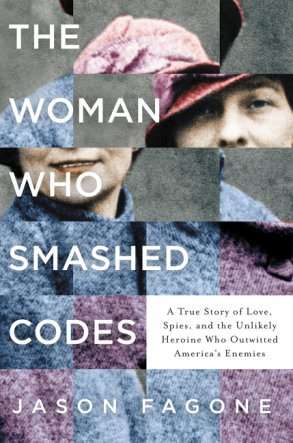
school in rural Louisiana. She never formally studied math, but was a genius of seeing and looking for patterns in words. She was a poetry scholar with a natural gift and she saw patterns clearly and deeply. She really was one of the greatest codebreakers of her time.
BookTrib: Why do you think Elizebeth, like so many women in the STEM field, didn’t get the recognitions she deserve?
JF: It didn’t compute that she was one of the best minds. There were men around her in this field and she was omitted by men most of her life. She as overshadowed by her husband who was known as the “godfather of NSA,” but she co-wrote the papers that made him famous. She chose not to put her name on them to boost William’s career. During WWII, J. Edgar Hoover blatantly stole credit from her. During Elizebeth’s time there was always the debate about women and men in this field. The debate was that there were biological differences that made women incapable of being scientists or mathematicians. Elizebeth proved you don’t need to have that biology. Women have always been doing this work. We can look to Elizebeth as an example of this.
BookTrib: Elizebeth was a spy. Julia Child was also a spy. Do you think it was the unassuming nature of these women that allowed them to move freely in this underbelly of the world?
JF: Absolutely! Being a woman was a terrific cover, men didn’t think women were capable of espionage. But women have been doing this for hundreds of years. Elizebeth was consistently underestimated, yet she was the first to leader of codebreakers in 1921. She was the first to get there. She was, despite the fact she faced the challenges of sexism, just so good at what she did, so skilled at it.
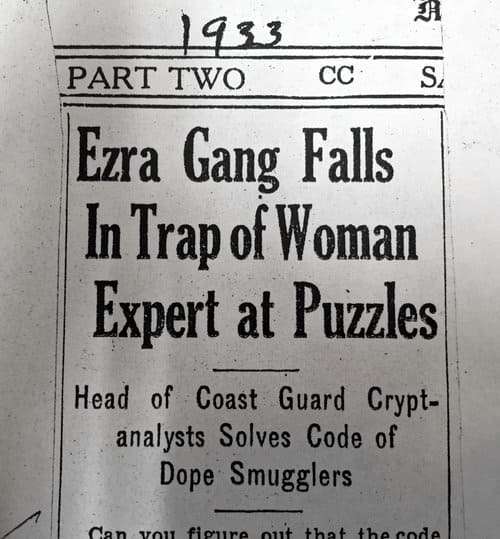
BookTrib: I want to switch gears here because the mass shooting in Vegas has been on everyone’s minds. You wrote a HuffPost piece a few years ago called What Bullets Do to Bodies and here we are just days removed from the deadliest terror attack carried out by a man with an arsenal of guns. How relevant is that piece now considering this recent tragedy?
JF: I wrote that piece because I was frustrated about how we talk about gun violence and I wanted to cover it from an angle that doesn’t get seen. My goal was to side step the usual debates and talk about something more direct. She’s [Dr. Amy Goldberg] had been treating victims of gun violence for a long time. She’s one of few people who can’t look away because it is her job to see it. People connected with Goldberg. The usual arguments weren’t there. What I learned and wanted people to take from it was this: we need to be talking about this more and stop looking away listening more.
BookTrib: When the Sandy Hook shooting took place here, nearly five years ago, I recall the mother of the child who had been shot 11 times saying how she wanted to see her child because as his mother, she couldn’t turn away, but she also wanted the rest of us to see what happens to a body when this takes place. That reminded me so much of what Emmett Till’s mother did in letting the world see her son’s body as it drew attention to the horrors of lynching in the south. Have we really gotten to this point where we just don’t want to see these things?
JF: I remember Noah Posner’s mother saying that. She said he was butchered. The fact that she didn’t hide from it and wanted us to all know, was powerful to me. I had a lot of respect for her decision. That was one of the things that I read that got to thinking about writing What Bullets Do to Bodies. We sanitize this image of the gun epidemic, we omit the pictures of the reality. We are having a distorted debate when we avoid talking about the horrifying and traumatizing impact of gunshot wounds on the body. We have a completely distorted picture of the damage to the inside of the body. The path they rip in the human body. People don’t want to confront it and don’t understand that reality. We do anything except talk about what bullets do to the human body.
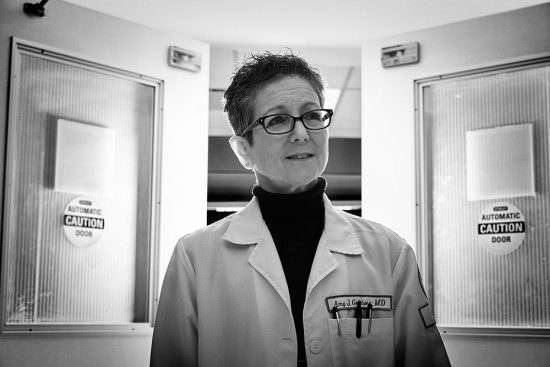
Goldberg still remembers things she’s seen from 30 years ago, but she must go in and figure out how to fix the damage. The part that describes a thoracotomy is very graphic and something most people don’t realize is a part of how these wounds are treated. They have to rip open the chest; it’s a very primitive process. There’s nothing gentle about it at all. It’s the kind of thing that if you see it, you won’t forget it. This is more than just an issue of rights, gun violence is a public health issue; any fix is going to have to be a public health one.
BookTrib: Thank you for sharing that, it’s very important information, especially now. This book, I know, took a lot of time, are you planning a new book?
JF: I think I am going to take a break from book writing. This was a three year project, so it was pretty intense. I am going to take some time off and do something different.
